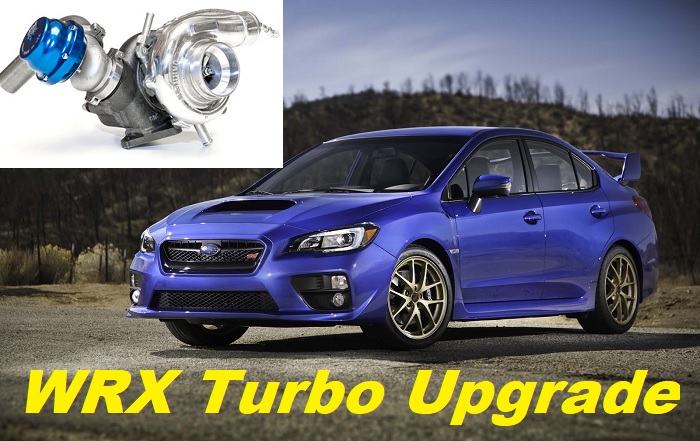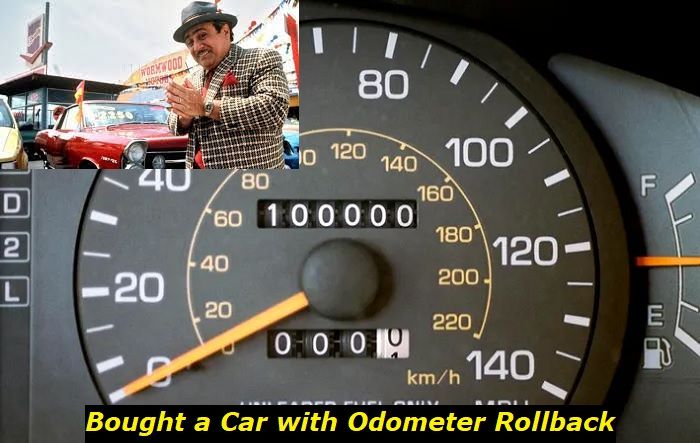2015 was one of the best years for the well-known Subaru WRX. This was the first year when this wonderful model separated from the Impreza and became a separate model selling alongside different Impreza models. Of course, the first generation of the WRX got a much better engine than a simple Subaru Impreza was using at that time.
Key features and my opinion about the engine
- Production years:1994-2024
- Average lifespan of EJ25:150,000-190,000 miles
- Fuel supply type:port injection
- Power range:155-310 hp
- Fuel efficiency:average
- Engine block material:aluminum
- Engine reliability score:medium
- The most common problems:extremely afraid of overheating, oil consumption, numerous leaks.

Some facts about the 2015 WRX engine
The first generation of the WRX (2015-2021) was powered by a single engine model - the 2-liter FA20F engine with 4 cylinders and 268 horsepower. The engine offered 258 lb-ft of torque. This is a boxer engine which makes it a little harder to maintain. But the turbocharger is still located optimally for maintenance and repair, so working with this part won't be a big problem.
The turbocharged 4-cylinder boxer with 268 horsepower is not a bad engine. But if you use your Subaru WRX for racing, you would like to have more power, better acceleration, and also sharper reaction of the vehicle when you press the gas pedal.
Here are some facts you should know about the WRX turbo engine:
- it's a simple and traditional engine with an average turbocharger, it gets most of its power from the unusual boxer construction;
- the transmissions for these engines weren't only manual, some trims came equipped with a CVT called Lineatronic;
- the WRX models weren't equipped with the more powerful 2.5-liter boxer engine, this one was available in the WRX STI models;
- the engine has the unusual location of the spark plugs and coils, also, it's very hard to maintain and repair its heads;
- the engine is very dependent on oil quality and level, it may easily die because of bad oil or low levels of oil;
- the engines aren't bad, they can show an average of 200,000 miles of longevity which is great for sports units;
- these engines weren't engineered for just city driving, they will want you to go to the racing tracks and get the speed out of them.
Of course, the Lineatronic versions weren't that good. If you want to feel a real beast under the hoof of a Subaru sedan, you should get a version with the manual transmission. It's a 6-speed manual transmission that was specially designed for this vehicle. Basically, the same transmission was used in all STI models with just a little changed setting.
We couldn't find a lot of bad reviews and reports about issues with this engine. Yes, it's relatively new, but some WRX models have already been on the road for more than 7 years now and their owners perfectly know about all disadvantages and common problems. Though, we can't name a lot of them.
The WRX turbocharger - is it good?
No, the Subaru WRX turbocharger wasn't the best option the company could use for the vehicle. First of all, they had the STI version and needed to make the same 2-liter engine in Japan to show much more power and torque. Secondly, they needed to fall under some power categories to avoid extra taxes and customs payments for their vehicles in numerous countries.
Also, Japanese engineers wanted to make WRX an all-purpose vehicle that would go well on racing tracks and would also be OK for taking your kids to school.
We don't know if they managed to do that, but we have some bad news about the turbocharger:
- it's quite small, so a lot of companies have come up with aftermarket turbo kits and replacement turbochargers;
- the turbo isn't the most reliable one among Subaru units, the WRX will probably have its first serious issue exactly with a turbocharger;
- the recommended 5w30 oil seems to be too thick for this turbocharger and this may be one of the reasons for bad durability;
- exactly in the 2015 models there was a problem with the soft and the turbo wasn't working at the best of its opportunities;
- the turbocharger appeared to be not that efficient and that's why we are talking about upgrades today.
But let's turn to some good news: you can upgrade the turbocharger basically in two possible ways. Firstly, you can install a bigger unit into the body of the OEM turbocharger by changing the diameter and you can also buy a ready-to-install turbocharger kit and use it in your WRX.
Making something with the body of a turbocharger to install a bigger unit is not cheap in terms of labor. So, if you can do it by yourself in your own garage or workshop then why not give it a go. But if you are going to have it all done at the repair shop, better choose the second option. Find a good turbo kit to upgrade the Subaru WRX.
What can you get after upgrading your turbo in the WRX?
Well, you shouldn't hope for enormous gain because the WRX engine block will not handle more than 305 horsepower and about 300 lb-ft of torque. We wouldn't recommend using a big turbocharger that could give you even more power because this will sharply reduce the engine's durability and will just kill it over time.
To gain even more power, you will need the following:
- consider new pistons for better durability of the block;
- work hard to make the cooling system more efficient;
- be careful with the oil - better use the one that is recommended by the turbo manufacturer;
- think about new valve seals because the old ones may start leaking fast;
- be prepared for the short lifespan of your engine after this upgrade.
Gaining 305 horsepower is the optimal plan because this way, you will not get a much shorter lifespan of the vehicle and will not have to buy a new engine in the end.
But we should say that a WRX with 305 horsepower is not a bad vehicle at all. You will get much better acceleration and a much better reaction from the car. You will not like the fuel economy though.
How much will it cost to upgrade the WRX turbo?
Well, the WRX turbo kit may cost $2000 to $6500. We would not even try to get any results with a cheap kit because you will consequently replace all the parts one by one and will pay even more than the most expensive turbo kit for your car costs now.
The $6000 turbo kit will contain a turbocharger, all needed pipes, connectors, oil lines, etc. But you will not be able to install it unless you are an experienced car mechanic.
The labor will cost at least $1000 if you just go to a Subaru repair shop near you and up to $3K if you prefer a Subaru dealer. Of course, dealers may just refuse to do this job.
So, eventually, the tuning of the Subaru WRX engine will cost you about $7000. This price will only include all the work and parts for your new turbocharger. Also, you will probably want to replace the exhaust manifold, cat converter, etc.
And the most important part: you will need to tune the ECU. If you don't do that, the engine will just go to limp mode every time you press the gas pedal hard. Tuning the ECU is an important part that can also limit the horsepower of the engine to avoid hurting it.
Are there any disadvantages in the turbo upgrade for the 2015 WRX?
If you do everything right, the chances are you will not see any serious disadvantages. But still. A turbo kit, even the most expensive one, will not include the turbocharger and other parts of the same quality as the OEM parts.
Also, the fuel consumption will probably be worse. And you will not be able to drive your Subaru in the city and get pleasure - it will always try to go racing.
And the last problem is the possible risks for the engine. Your WRX engine lifespan will not be as good as before.
Final words
The 2015 Subaru WRX is a good vehicle that combines all the needed qualities for active driving. This is a beast that has a little underpowered engine. And you may solve this problem by upgrading the turbocharger. It's not going to be cheap, but the results will anyway be surprising. Though, you won't be able to get over 305 horsepower without losing the lifespan of the engine.
About the authors
The CarAraC research team is composed of seasoned auto mechanics and automotive industry professionals, including individuals with advanced degrees and certifications in their field. Our team members boast prestigious credentials, reflecting their extensive knowledge and skills. These qualifications include: IMI: Institute of the Motor Industry, ASE-Certified Master Automobile Technicians; Coventry University, Graduate of MA in Automotive Journalism; Politecnico di Torino, Italy, MS Automotive Engineering; Ss. Cyril and Methodius University in Skopje, Mechanical University in Skopje; TOC Automotive College; DHA Suffa University, Department of Mechanical Engineering






Add comment